Holidays on hold
Tourists have clamoured to see the sights of Cambodia and, for years, business has moved to meet demand. But the sudden collapse of the global travel industry has brought an end to the party, with once-bustling towns like Siem Reap now lying dormant
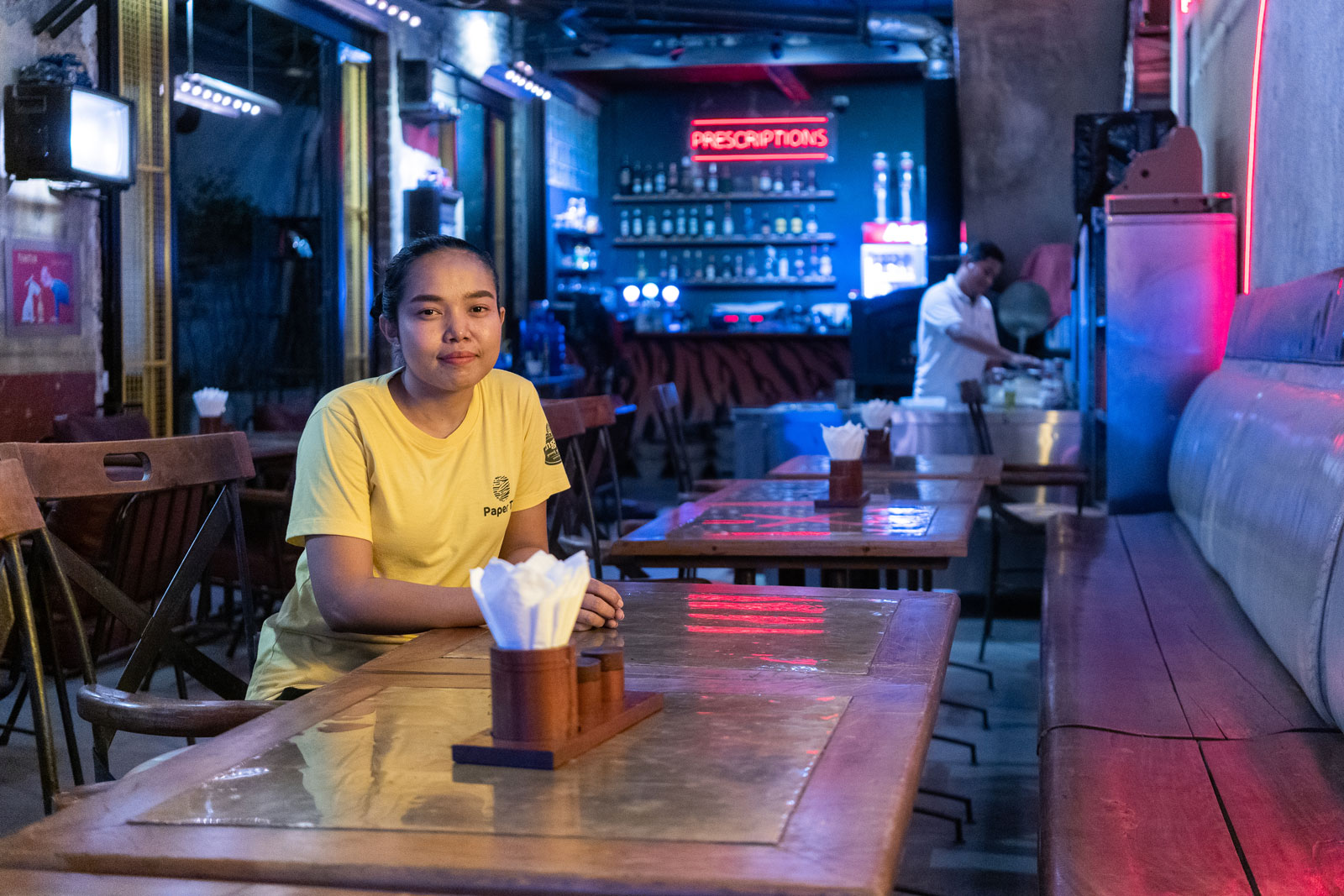
This is the fourth of our five-part series, Cambodia in Quarantine, investigating the impact of the global pandemic on the four pillars of the Kingdom’s economy – garments, agriculture, construction and tourism. A pillar will be published each day on our website, while paying Globe members will receive early access to the full report in a special e-magazine. Sign up now to get all the stories today and support independent journalism from across Southeast Asia.
Additional reporting by Kong Meta
Siem Reap is in its slow season, a time when the bustling hotels, restaurants, temples and bars of the tourist hub have largely emptied of the tourists that make the lifeblood of Cambodia’s gateway to the Angkorian temples.
But this season, wedged into the global travel shutdown of the Covid-19 pandemic, is unlike those that have come before.
For Ta Proum, 35, a tour guide at Angkor Wat, the collapse of global tourism has had a profound effect. He’s worked outside the massive central temple for eight years. Before Covid-19 emptied the skies of international travellers, he could earn anywhere between $30-35 per day; now, a day of work might pull in as little as $1.
“After Lunar New Year [late January] to May, there was no income,” he said.
Though things picked up a little in June and early July, Ta Proum said the recovery has only truly begun in the past month and, even then, it’s just a fraction of the pre-pandemic numbers.
Today, it’s mostly just Cambodian tourists coming to see the temple and witness a piece of their national history. The visitors are enough to keep things moving at a sluggish pace, but gone are the Chinese, Korean, Japanese, European and North Americans who could afford to pay the higher prices that sustained the city’s economy.
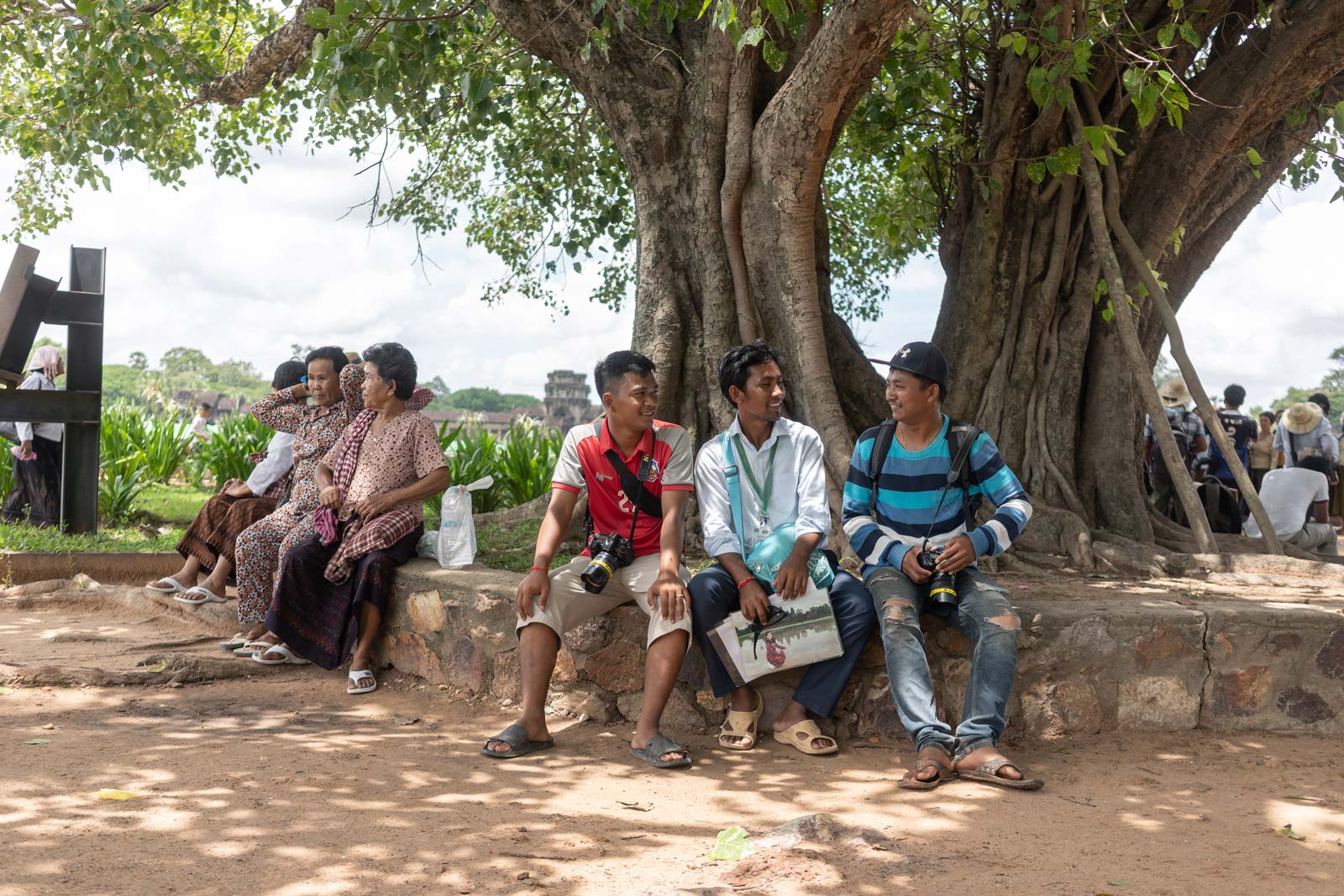
For those like Ta Proum, who built their livelihoods on that demographic, the Covid-19 economy has not been kind.
“I’m nervous,” he said, pointing a finger to his head. “I’ve been taking medicine for it. I don’t sleep well and I’m having bad dreams. Every night feels like my funeral, as I have no money to pay the bank.”
The pandemic has devastated the tourism industry globally, grounding planes and pushing airlines to the point of insolvency. The International Civil Aviation Organization has predicted for 2020 an overall reduction of 45-51% of seats offered by airlines and an overall loss of as many as 2.8 billion passengers, amounting to potential monetary losses as great as $386 billion.
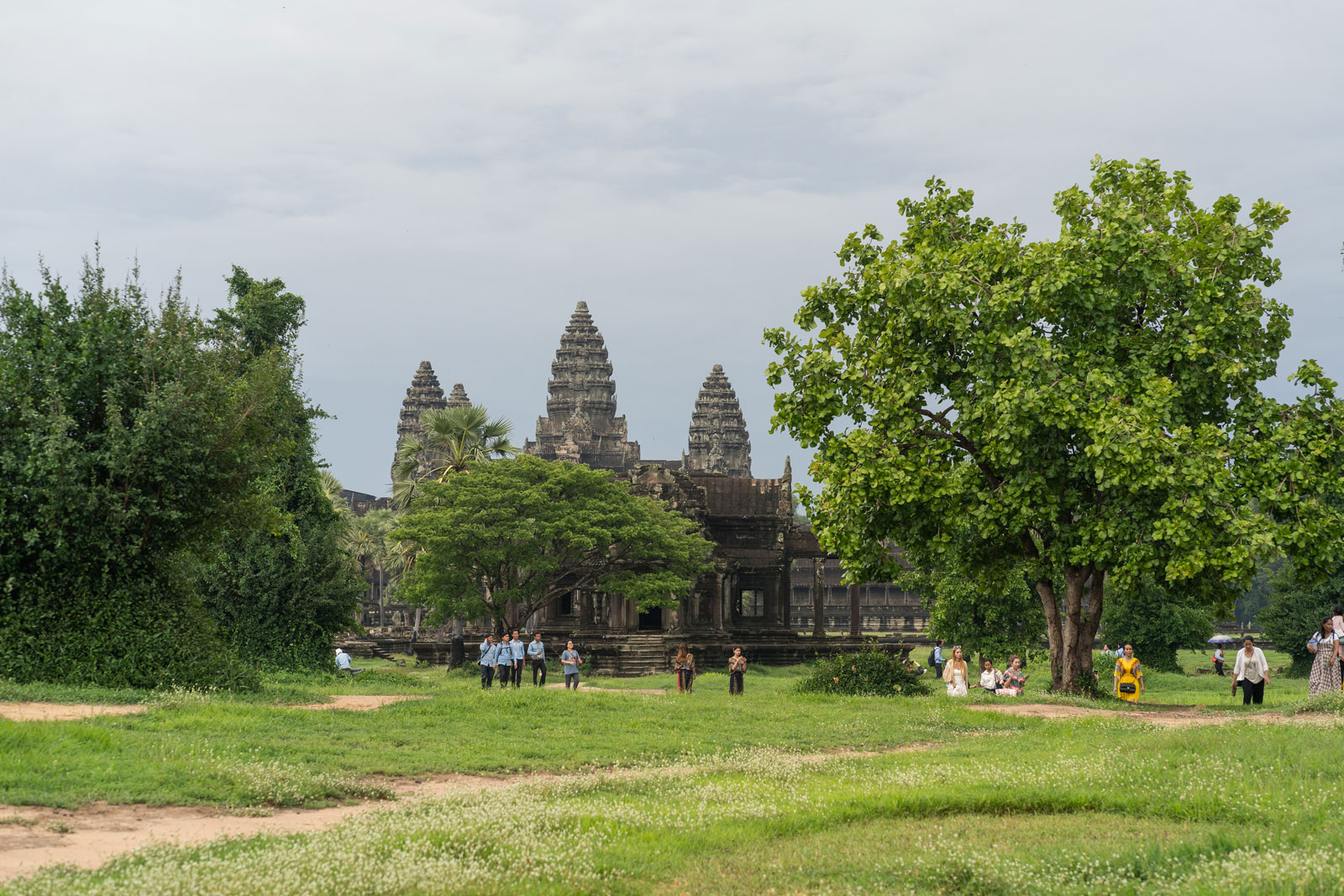
In Cambodia, tourism is the foundation that undergirds much of the rest of the economy. According to the World Bank, the broader tourism and hospitality industry is the second-largest growth driver in the Cambodian economy – behind only construction – accounting for about 18.7% of real GDP growth last year.
In 2019, the Kingdom had 6.6 million international arrivals, a more than 6.6% increase from the year prior. According to the Ministry of Tourism, these arrivals generated more than $4.91 billion – the highest in national history. The Ministry also records total direct employment of more than 600,000 people in the industry and says it generated a little more than 12% of 2019’s GDP.
That haul comes from thousands of businesses, official and not, that have sprouted to cater to millions of guests and counting. The Ministry reported for 2019 licenses for more than 1,050 hotels and 2,705 guest houses across the country offering tourists their choice of more than 81,000 rooms. The number of hotels alone in that year had grown by 24% from the year prior.
Top Sopheak, under-secretary of state for the Ministry, said his office was predicting a recovery period of at least five years before the number of new arrivals would return to pre-pandemic levels. So far this year, he said more than 3,000 businesses in the industry have closed and the jobs of more than 50,000 people have been directly affected, as per ministry records of formal employers.
“Nobody can predict when this will finish, but we are expecting a very large decrease,” Sopheak said, estimating sector losses of about $3 billion for the year. The government had extended some tax relief for businesses in the sector and has provided some relief payments to workers themselves, about $40 per month to those in formal businesses that suspended operations due to Covid-19.
Pre-pandemic, tour guides like Proum were part of a small army of more than 6,330, about a third of whom were in Siem Reap. As expansive as the numbers were, they still just represented those counted by the government, with more businesses and entrepreneurs – such as freelance tour guides and vendors near popular spots – not accounted for in official statistics.
But in a May update from the World Bank, economist Ly Sodeth explained in an informational video that tourism is “the hardest-hit sector” in the Cambodian ecosystem.
During the first two months of this year, Sodeth said, tourist arrivals declined by 25.1% year-over-year. In those early months, Siem Reap, Cambodia’s top tourist destination, experienced a decline of 45.6% in tourist arrivals – but that was still just a taste of what was to come. The temple park saw a virtual shutdown in tourists as the slow spring dragged on and recorded a 99.6% reduction in visitors in April.
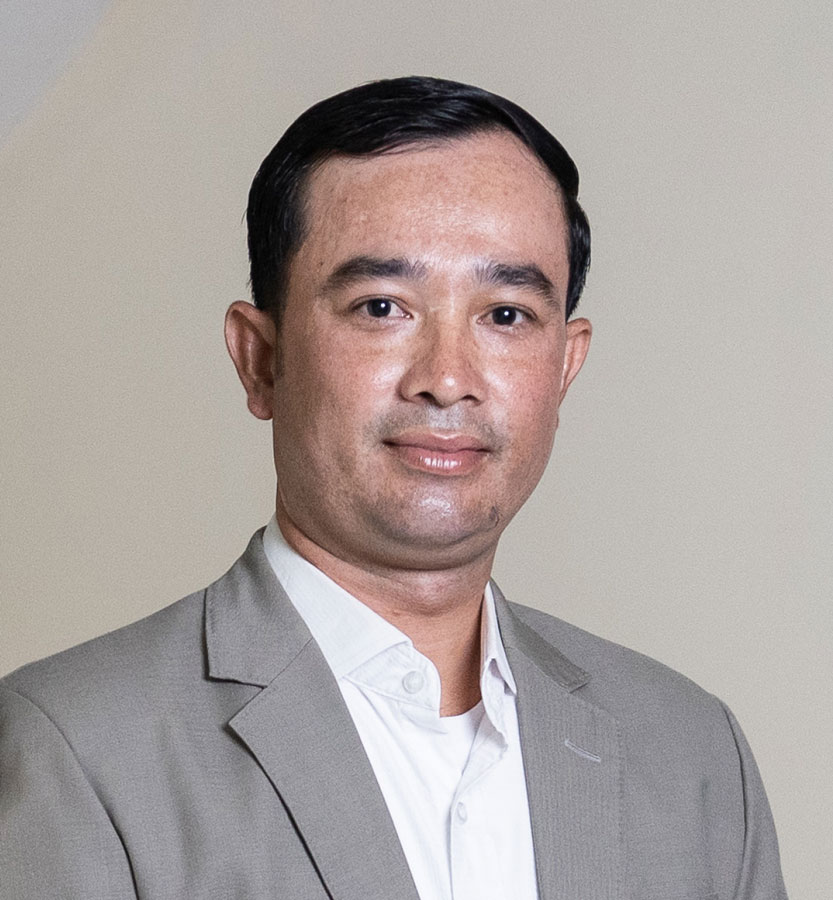
Nobody can predict when this will finish, but we are expecting a very large decrease
With these newcomers held out by pandemic conditions, the industry has, in the words of the World Bank, collapsed.
Workers like Ta Proum in Siem Reap have felt the pinch most acutely. In the capital, it’s easier to overlook the gaping hole in the economy made by the loss of tourists, but in Temple Town, not so much.
By early July, internal tourists trickled back into the city, taking their opportunity to catch a glimpse of Angkor’s famed temples without the usual foreign crowds.
Among them was Ngem Kim Sreng. As she crossed the moat to exit the temple complex, the 45-year-old was enjoying her first time ever going to Siem Reap and Angkor Wat. Travelling with her daughter and younger sister, she was happy to marvel at the ancient temples.
“I want to see more people than this but I am also worried of getting infected. I think the more the merrier,” she said.
Dave Manson, an American expat living in Phnom Penh, said the sight of the temples in their quieter state was a rare experience given their global popularity.
“I came first in ‘95 and this would have been a lot of people then,” Manson said, holding the hand of his young daughter. “That was a much different time, but then I saw the hordes of people too, and that was also different.”
He empathised with those who depended on mass international tourism to make a livelihood but, as a tourist himself, he didn’t miss the crowds.
“The locals are suffering, but I like, personally, the quiet change,” he said.
Like Cambodian’s traditional farmers waiting for rainy season floods, those who work in tourism here are accustomed to seasonal rises and falls, building their businesses around its cycle.
But while the tides are usually lower this time of year, this season there’s a drought.
The loss of primary industry has had a knock on effect with other sectors, grinding to a halt construction projects, startups and other businesses caught in the fallout.
Away from the temples, some businesses have adapted to the new, perilous normal. Others have sold off their stock – their toasters and kitchenware, the lamps and Angkorian-kitsch decor – and closed their gates.
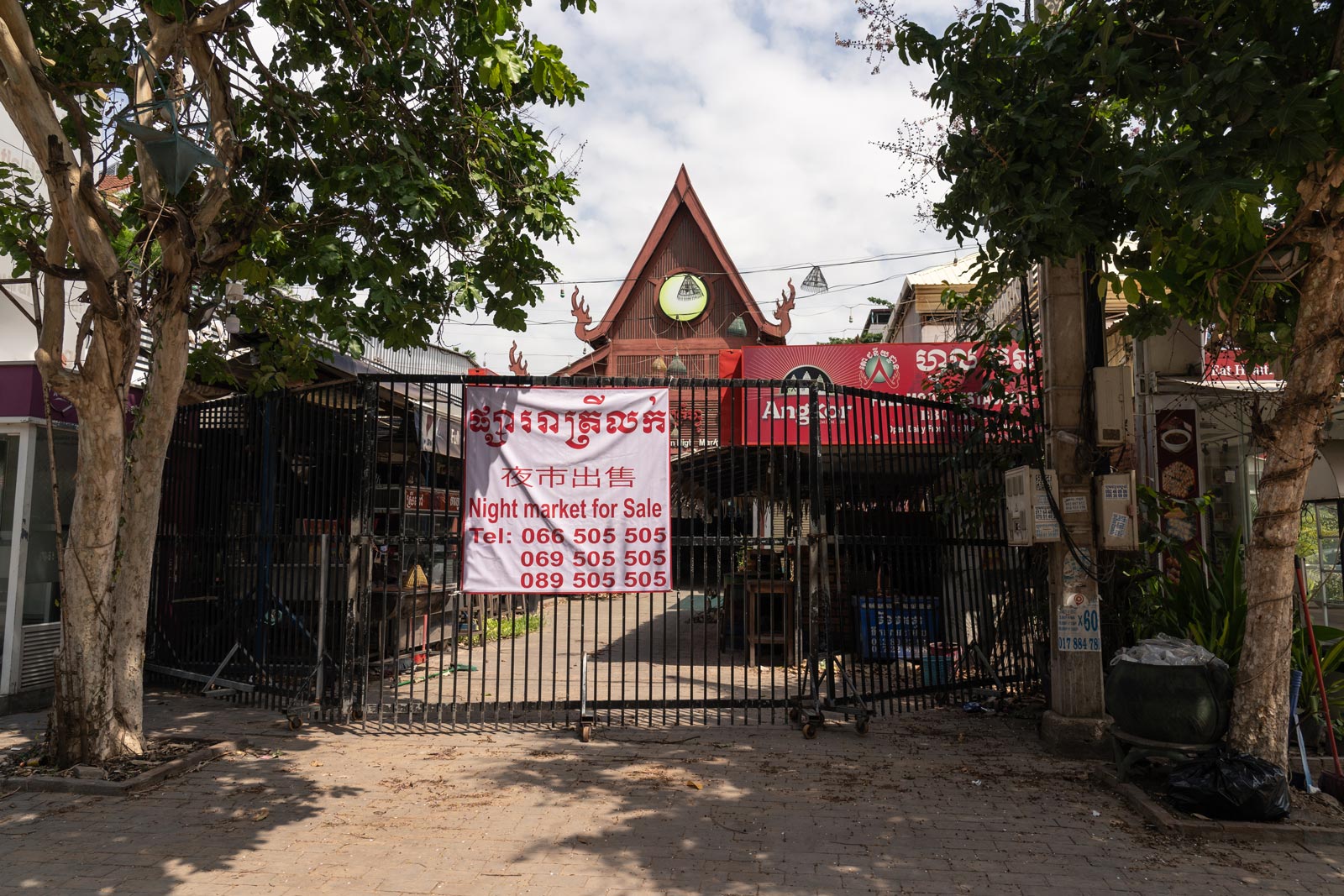
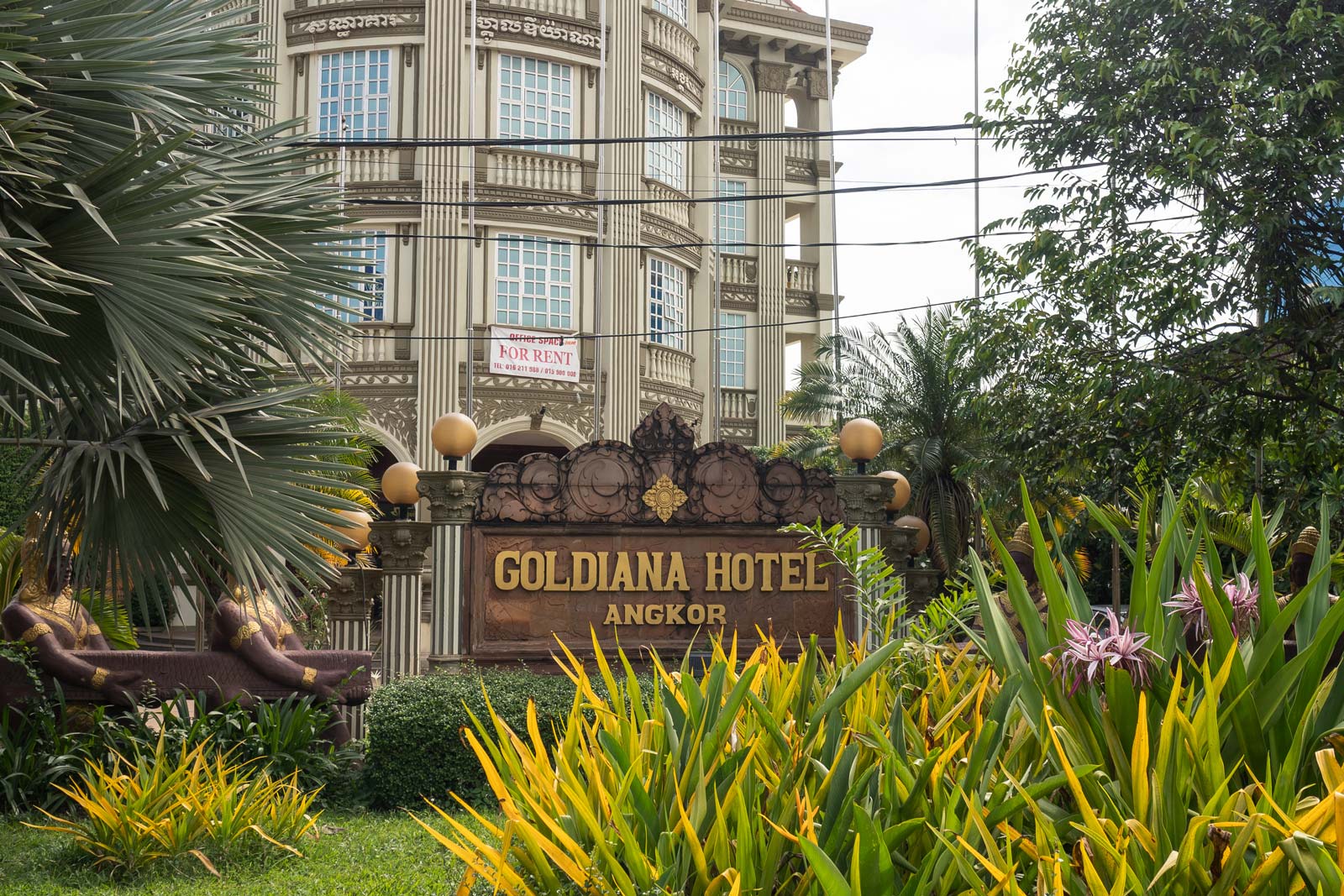
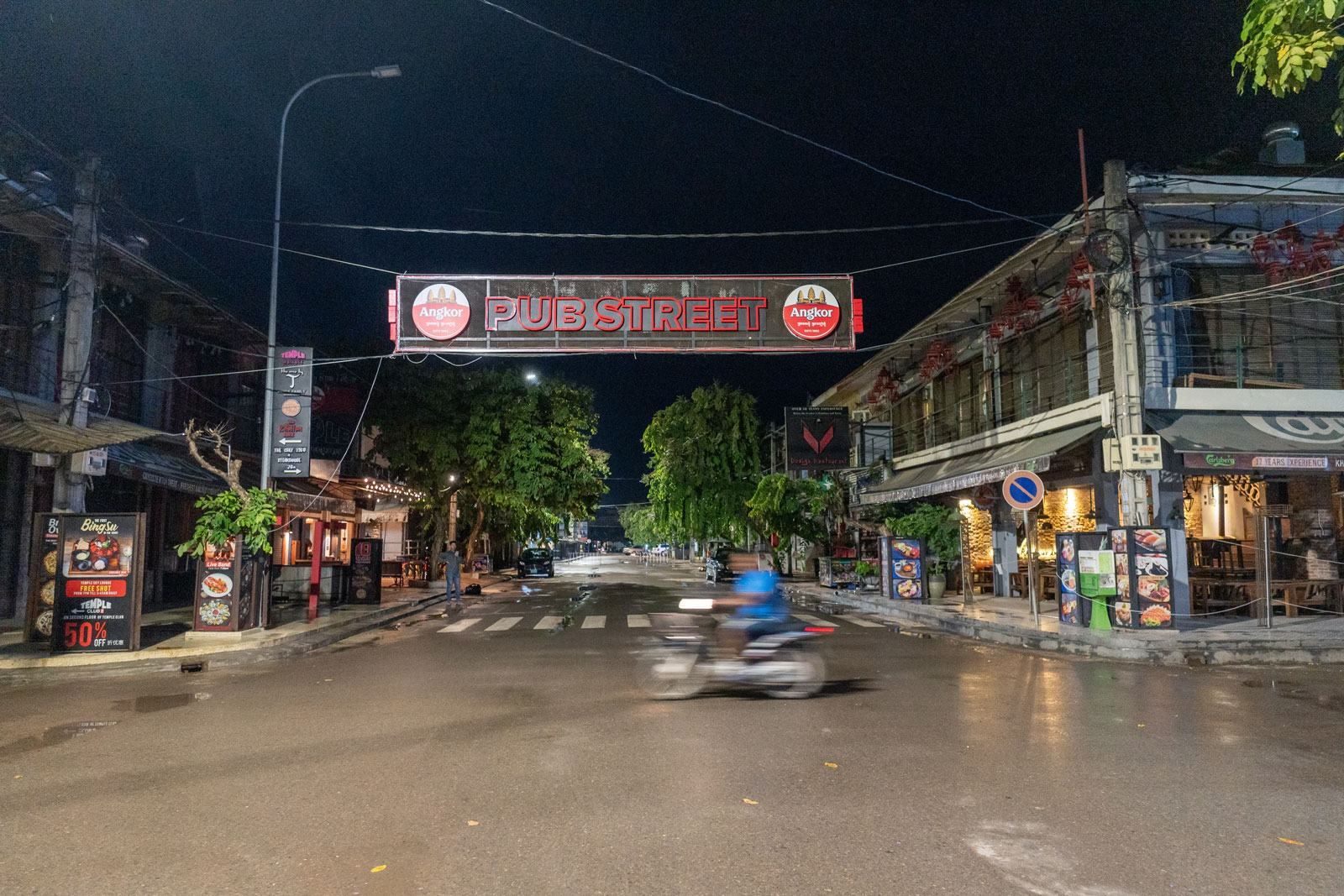
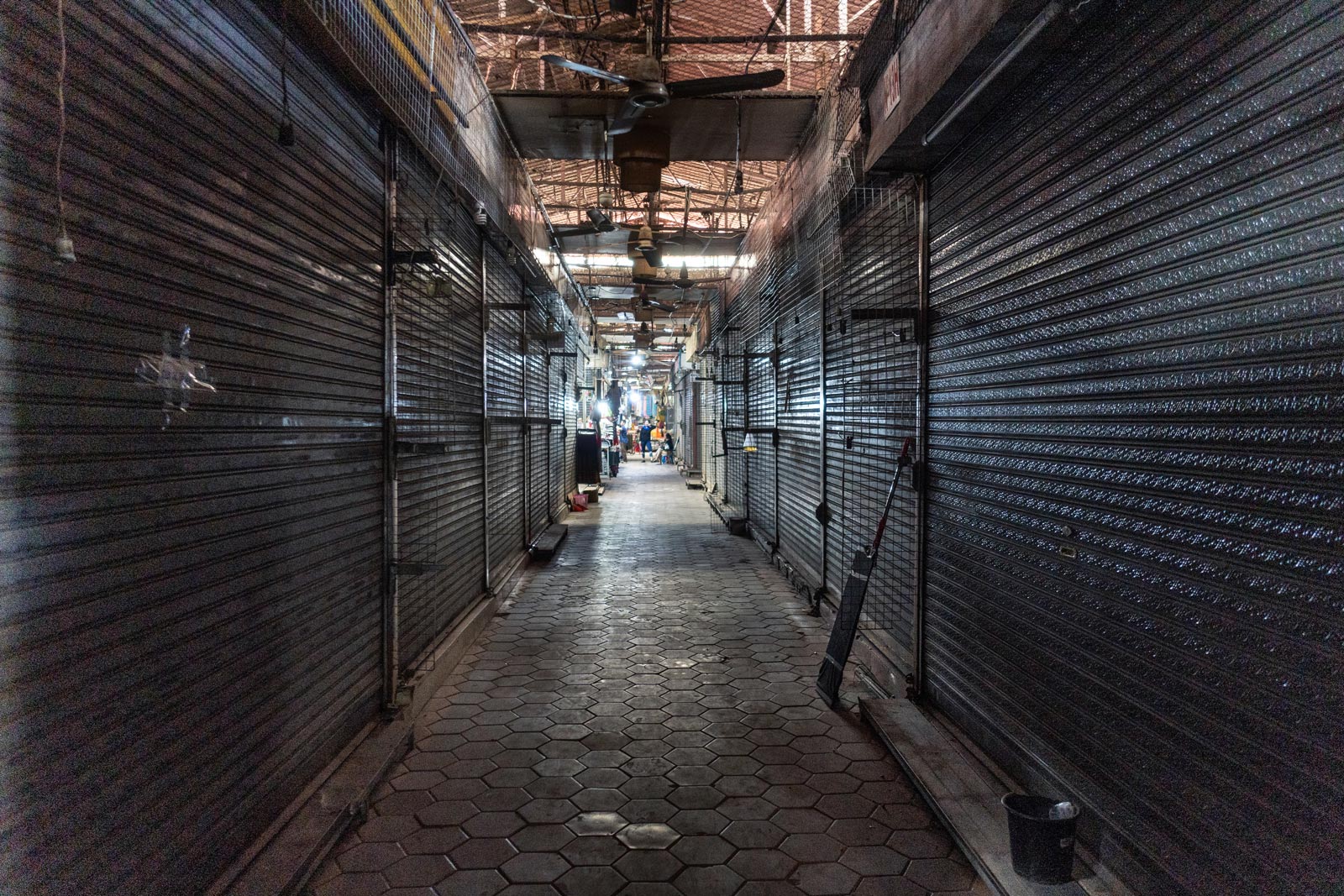
Siem Reap’s tourism industry has been wiped out by the Covid-19 crisis, with many once-renowned venues empty, closed or up for sale. Photos: Enric Català Contreras
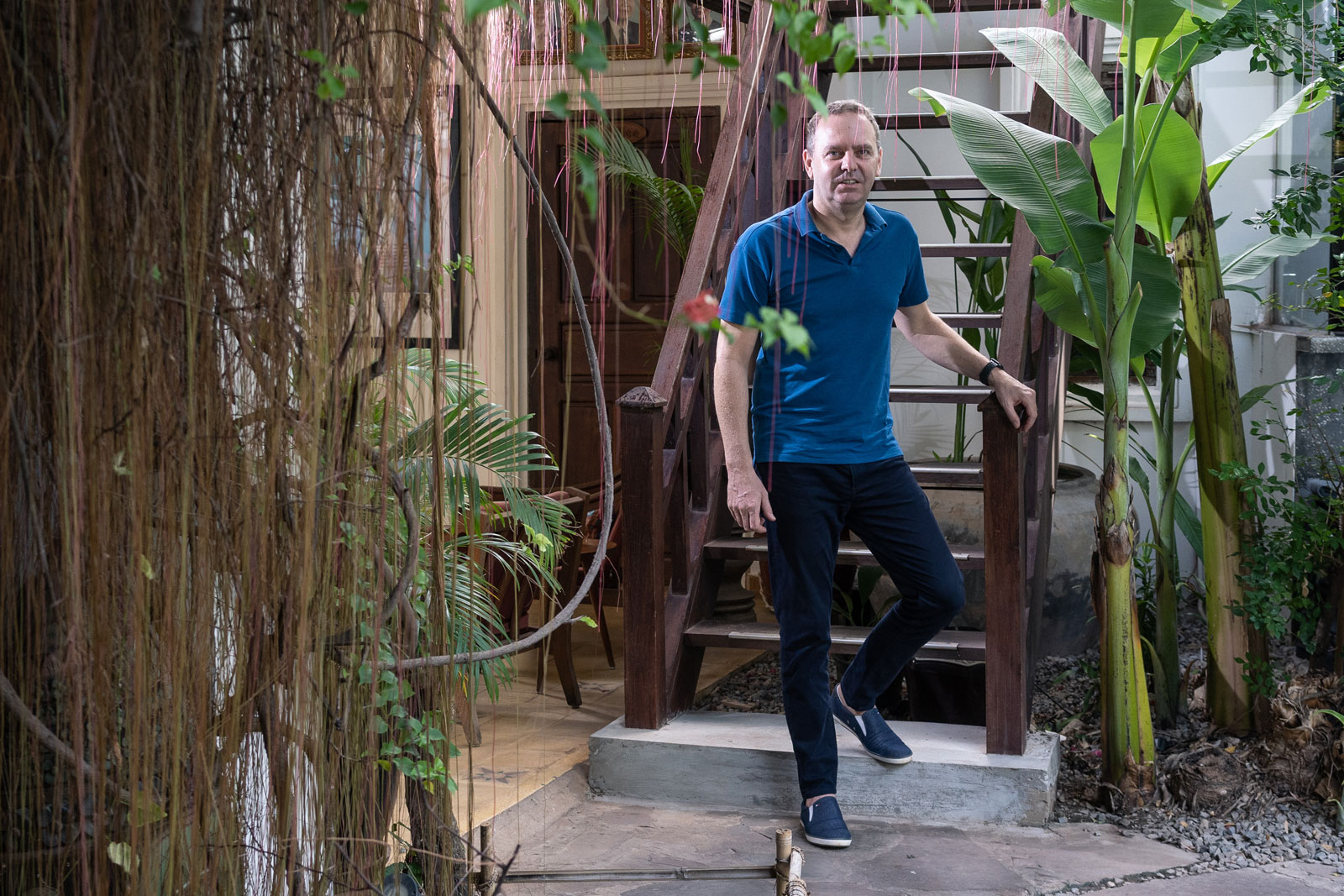
While a visitor can still find a good meal and a place to stay, the lights of the tourist-friendly downtown have dimmed, both in the businesses that serve guests and even in the public features designed to entice them, like the colourful, decorative bridges that cross the Siem Reap River just a block or so from downtown.
The bridges are dark now. And, at the start of the month, so too was the Pub Street, a solid block of tourist-oriented entertainment where a visitor could once chase debauchery in the nightclubs, grab an ice cream from a street vendor and soak their weary feet in a fish-massage tank.
On a Thursday night on Pub Street in late July, the lights and booming sound systems of the normally bustling mini-district had faded into the quiet darkness.
Paper Tiger is a small light in the gloom. Inside the open-faced bar, a waitress sat at a table near its side. Behind her, a coworker prepared pizza ingredients. Waitress Srey Leak said the bar, its front decorated with accolades from travel websites, had seen a dropoff of Western clients since late March and had since shifted to a primarily Khmer clientele.
The restaurant has offered new discounts on food to entice visitors to make a visit down the otherwise dark grid of Pub Street. Some of the workers she’s known have left the restaurant trade to go farm or seek labourer positions elsewhere.
“The people’s livelihoods here depend on the clubs and the restaurants,” she said.
In her own family, in which she is one of five siblings, some have already left the quiet city to venture out to Phnom Penh to search for work. While Srey Leak still has hours at Paper Tiger, she’s nervous about money – a $5,000 loan is coming due, and a representative from her financial institution has already come by the restaurant twice.
If there’s anything boosting anxieties for the people of Siem Reap, it’s the uncertainty of when, if ever, things will return to a semblance of normalcy.
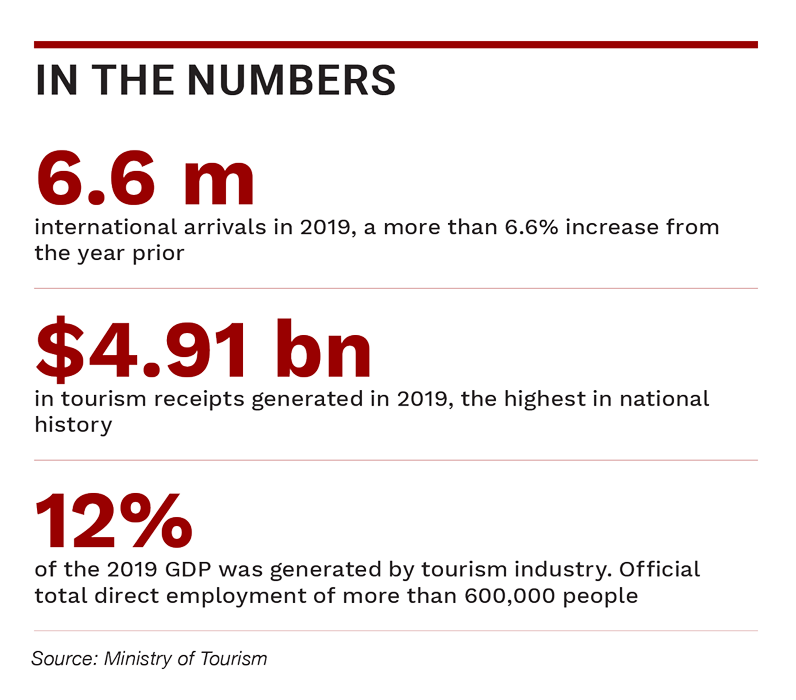
Dean Williams is the proprietor of Miss Wong’s, an upscale cocktail bar and eatery. On a weekday afternoon, he was in the middle of a renovation project.
He’d left his former central location on the other side of the river, not far from Pub Street, after the rent situation there became untenable due to Covid-19. He’d been paying $3,000 per month on the old space after his landlords doubled the rent at the end of last summer; when the pandemic wiped out international tourism, his landlords said they couldn’t renegotiate.
For now, Williams says the situation in Siem Reap has reached a sort of equilibrium.
“Everybody’s going to be bouncing along the bottom for a long time,” he said. Williams said he’s optimistic, even while describing the challenges of the day, but admitted to feelings of doubt at times given the ambiguous nature of the struggle.
“It can be really scary,” he said of the ongoing situation and the constant adaptation and navigating required by the Covid-19 era. “Is this going to work? What is this for?”
The last few months have been a slog for local businesses that focused on international traffic, like Rambutan Siem Reap, a boutique hotel with another location in Phnom Penh.
Resort manager Tommy Bekaert said Rambutan, a more upscale hotel known for its LGBT-friendly messaging, has been able to field expat visitors from Phnom Penh who are familiar with the location and its brand. Prices have fallen in Siem Reap out of necessity and his hotel has reduced its rates by at least 30%. Bekaert said the team there, including himself, have shifted to a part-time schedule.
While he said he has noticed increased movement in the early summer period as internal tourism has increased, Bekaert stopped short of calling the increased traffic a recovery. He laughed when asked about profits.
“There is no profit,” Bekaert said. “There is loss.”
Siem Reap’s high-season is November through February, ushering in visitors at the end of the Cambodian rainy season. But this past high-season struggled along amidst lower tourist entries, leaving weekends at Angkor Wat reminiscent of the low.
Moern Yokho has been in this business for years, escorting foreign tourists through Siem Reap. Unlike Proum, her work is more encompassing than just Angkor Wat; she works with tourists arranging visits all over town, escorting them from the airport on. Chheang Sreymom, operation officer at Smiling Albino Cambodia is in a similar position; her company usually works with high-range visitors who spend up to $10,000 for a family trip to Cambodia.
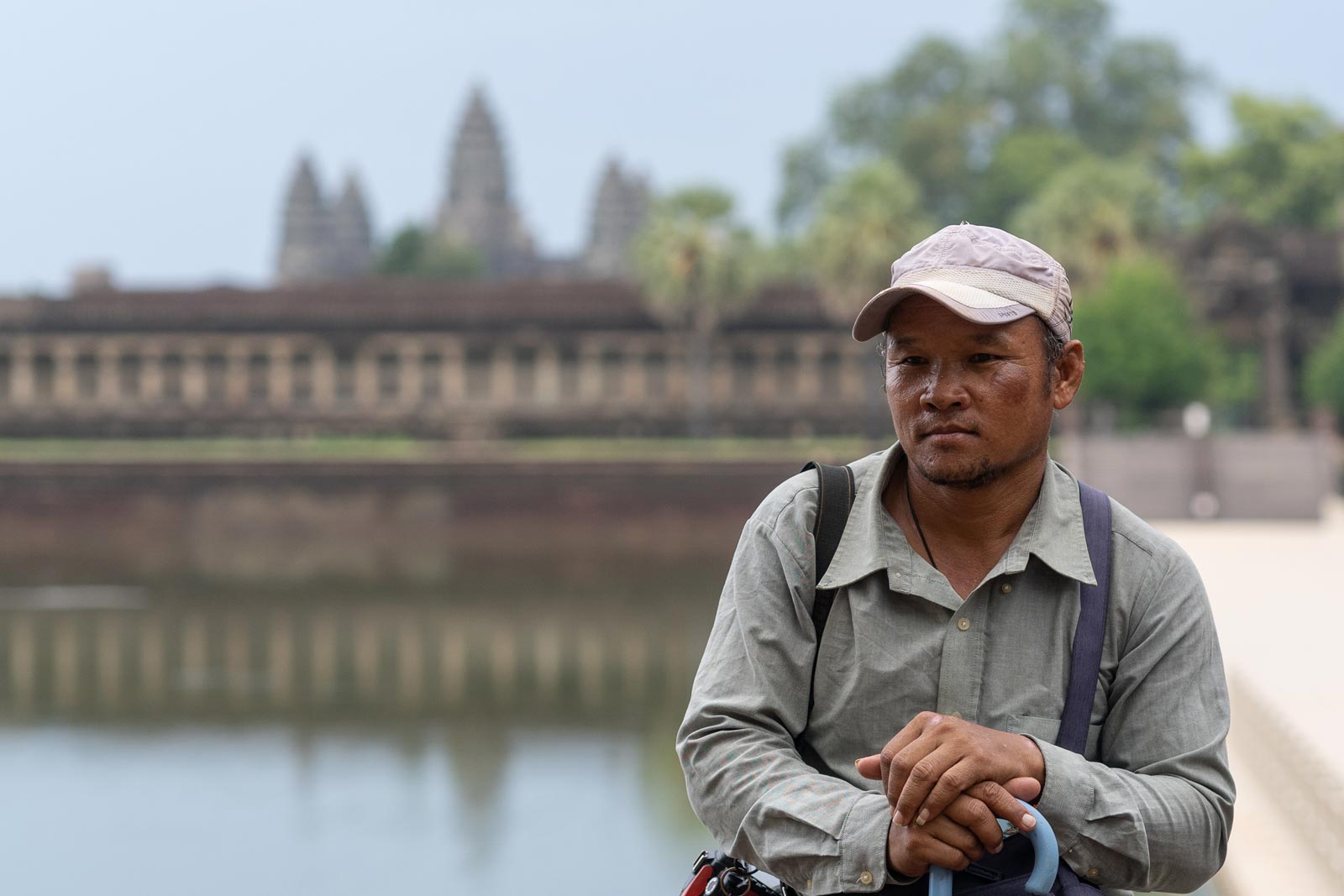
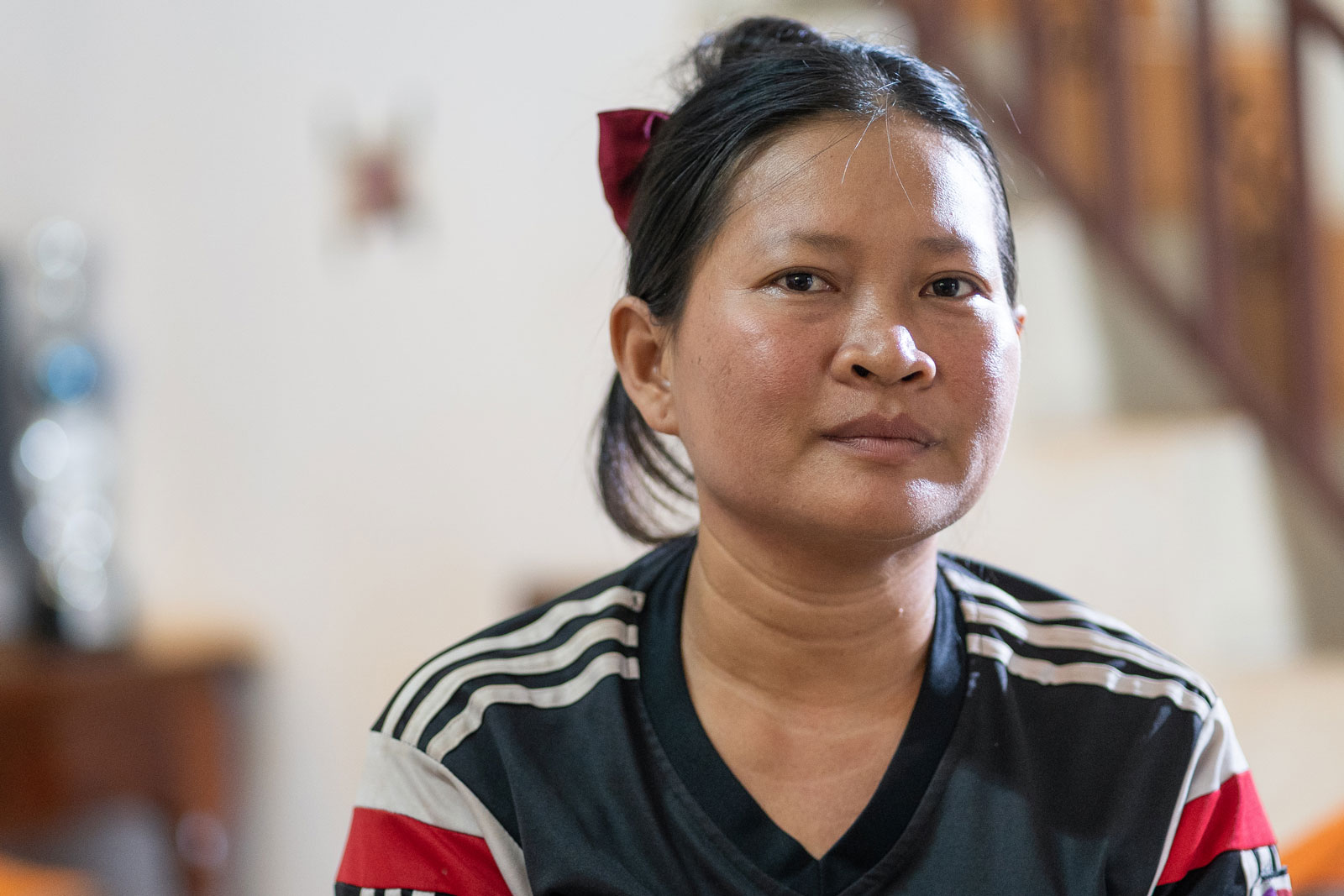
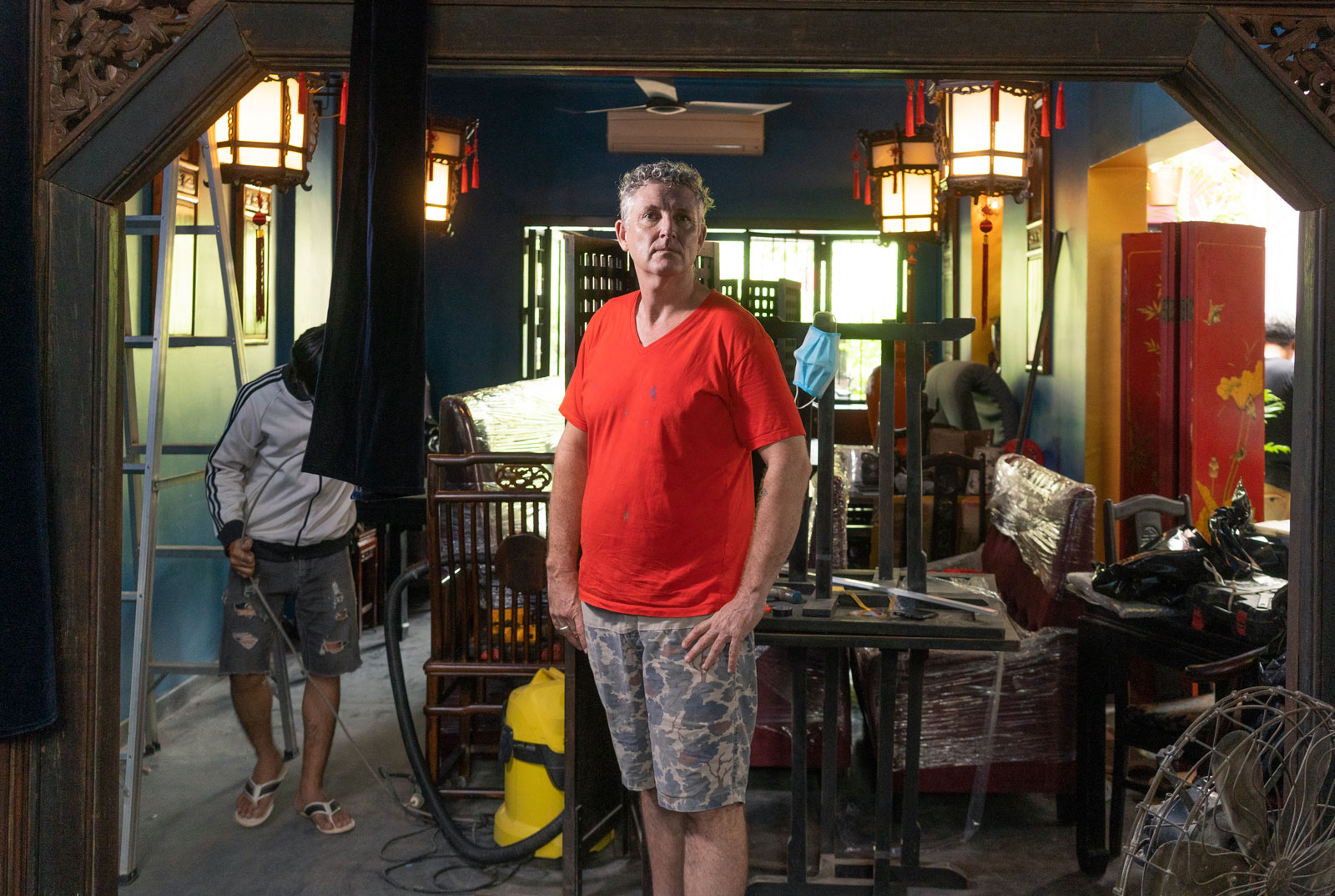
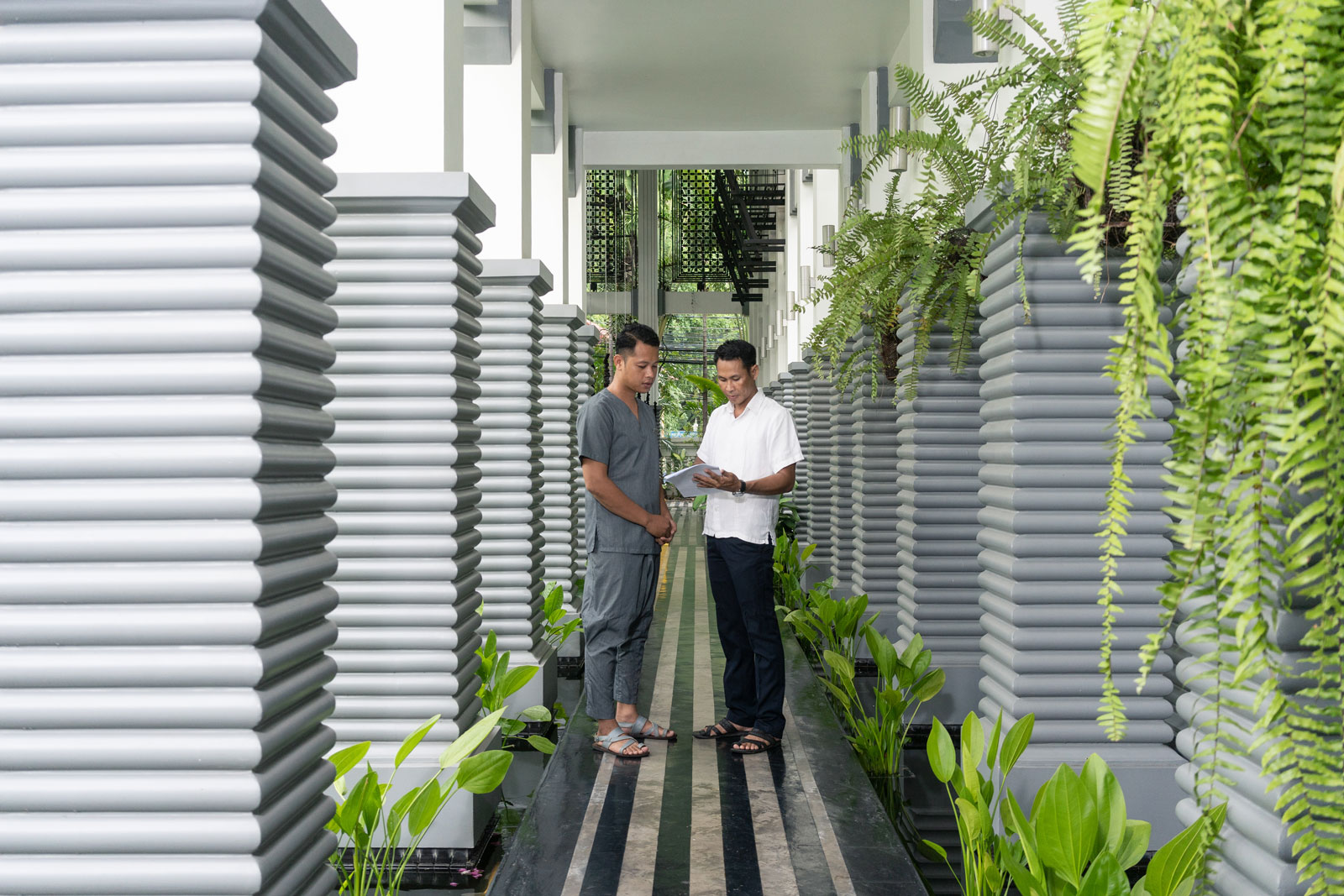
Sreymom still has an office to go to every day, though there’s not really much to do. She oversees the facility on a shady stretch of road down the river from the tourist centre. Her boss, she says, is stuck in his home country the UK, waiting for travel restrictions to lift.
Even though she’s not stuck in the same sense, Sreymom is still feeling trapped in the Covid-19 fugue. She’s bored at the office with nothing to do and, though she has two bookings scheduled for November, there’s no certainty those will come through. She’s getting paid, which is more than many can say in town, but even still, she’s thinking of quitting to seek something, anything, to do.
Without tourism, she admits, the horizon seems to have closed in.
“I’m really worried about the future for Siem Reap’s people,” Sreymom said. “We solely depend on tourism, so we’ve been thinking it will be difficult to find jobs in anything else.”
Yokho is looking at the same bleak situation. Her last assignment earlier this year was a bust when a group from France never showed up and, though she got a few bookings in April, all of them cancelled as Covid-19 restrictions ramped up around the world.
She has nine siblings, almost all of whom work in hospitality. For most of her career, and that of her husband as well, the industry has provided a steady line of work, enough to build a good life for the family, including the home they now live in.
Her success in the industry, paired with her husband’s own work at a hotel, had allowed the family’s eldest daughter to split her school day between the public system and a private programme.
The family had taken out a $30,000 loan to buy their house, which Yokho says they were previously on track to pay off in three to four years. That timeline is now plunged into uncertainty, without even a glimpse of normalcy on the horizon.
Yokho said she’d try to renegotiate with her bank for a more manageable payment schedule. For now, her husband is considering raising frogs at home for the family to eat, cutting back on their food spending.
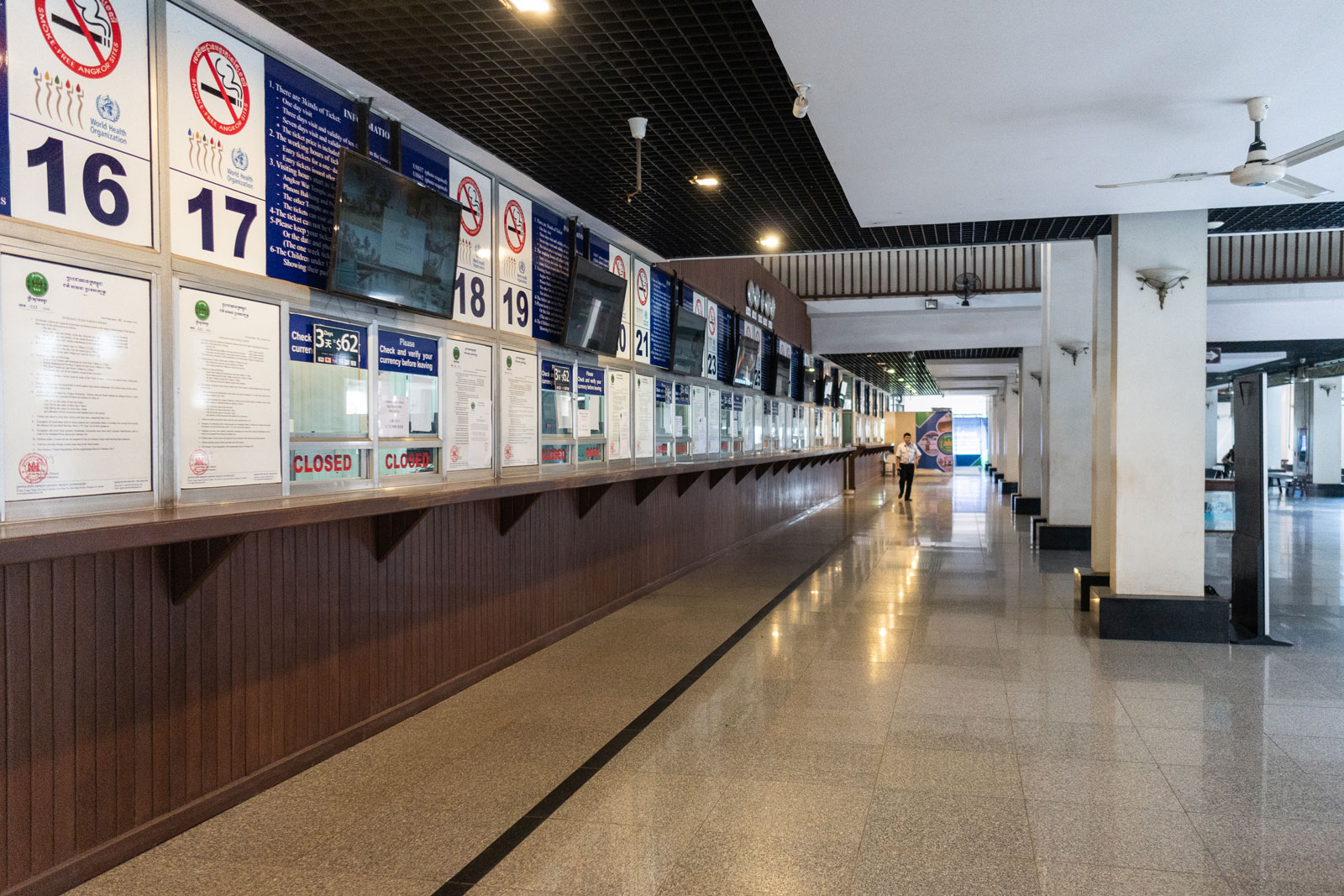
“When Covid-19 first started, I thought it wouldn’t last so long,” she said.”Now, I don’t have confidence. My job depends on tourists so if they’re not able to come, we have a big problem.”
With more time on her hands, Yokho has gotten into needlepointing, a popular craft in Cambodia that she doesn’t usually have much time for. She unfurled a colourful apsara scene, complete with an Angkorian background, that she’s been working on since the onset of the crash. In happier times, she’d often pass some free-time singing in the house; now, with far too much time, she’s in no mood for song.
Yokho says she’d visited the temples themselves since the shutdown on a trip with some other guides, some of whom took the rare opportunity to take photographs of the iconic vistas without the crowds.
“The temples are very beautiful without people,” she said. “But we’re very happy to see the tourists in the picture, because that means we have our jobs.”
In the final story of Cambodia in Quarantine, we will be hearing Andrew Haffner’s thoughts and reflections on producing the series.

